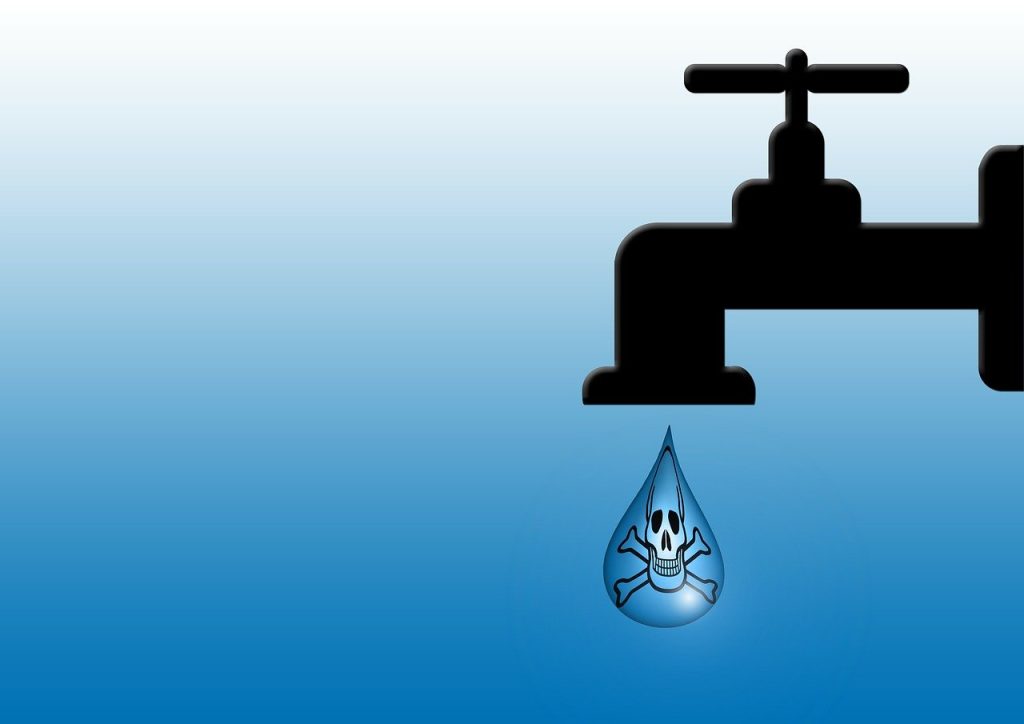Water pollution is a big problem which is caused by the contaminants that seep into the soil near the water resource and then mix with water. When these contaminants mix into the water, they change the PH balance of water that may prove unhealthy.

The contaminants that cause water pollution include microbial bacteria, pesticides, lead, mercury, and microplastics. These contaminants enter our bodies and cause severe health problems like cholera, diarrhea, and kidney stones.
Bacteria and viruses are also considered water contaminants that inhabit lakes and rivers. These pollutants are increasing rapidly because of dead and decaying plants at the bottom of rivers.
Pesticides from fields, lead, chromium and cadmium from old water pipes also add to water pollution. There are different technologies out there for water treatment at home. However, springwell filters are very famous in filtering harmful contaminants from water.
Let’s discuss the top 10 most common contaminants found in tap water and who they affect human health.
1. CHLORINE
Chlorine has been used as a disinfectant for decades and sometimes it is mixed with ammonia to form chloramines. Both these compounds are considered water pollutants.
Chlorine leaves an unpleasant smell and taste in water which makes it non-appealing for the drinking purpose.
Consumption of chlorinated water can cause irritation of the nose and sometimes it causes stomach discomfort. It also makes the skin dry because the tap water has a higher amount of chlorine than the required amount.
2. BACTERIA
Bacteria that inhabit the lakes and rivers pollute the water. These bacteria can grow at a rapid rate and make their colonies. The bacteria then enter the water pipes and pollutes the tap water also.
Drinking contaminated tap water can cause various health problems like cholera and low bowel movement. The consumption of this water also leads to kidney stones and stomach disorder because the bacteria present in the water settles down in the body organs.
E.coli is the most harmful pollutant that comes from the wastes of human and domestic animals.
3. LEAD
Lead is a toxic metal and it is added to water due to the corrosion of water pipes. The water system is older and due to the availability of water in metal pipes, they become corroded.
Lead leaching from metal pipes has many adverse effects on health. It can affect the developmental stages in babies and children leading to neurological issues and deoxygenation in the body cells.
Lead also disturbs the normal blood pressure and damages the kidneys because these heavy metals remain in the body for a long time and cause severe health problems.
4. CHROMIUM
Chromium is also a water contaminant and it has two types: trivalent and hexavalent chromium.
Trivalent chromium is a naturally occurring metal and also it is a very essential metal.
Hexavalent chromium is also a naturally occurring metal however it is harmful for the health if consumed in water. It can damage the skin if directly in contact with the skin.
The chromium can cause health problems like irritation of the skin and nose, respiratory issues, and cancer.
5. HERBICIDES
Herbicides enter the rivers and lakes due to the heavy rainfalls. These chemicals settle down in the bottom of lakes and contaminate the water resources.
Drinking the contaminated water causes the entry of these chemicals into the body. These chemicals affect the hormones and reproductive organs of the body.
6. PHARMACEUTICALS
Water is also contaminated because of the improper disposal of pharmaceuticals. These are the chemicals that are used in the medication. The companies that manufacture drugs do not dispose of these chemicals properly.
The improper disposal of chemicals pollutes the water resources and consumption of that polluted water has adverse effects on health like kidney stones and cancer in adults and developmental issues in children.
7. PESTICIDES
Pesticides are also one of the main reasons for water contamination. These chemicals drain into the water treatment plants and remain untreated during the whole detoxifying process.
The untreated waste when disposed of in the lakes and rivers contaminates the water and causes various health problems.
8. FLUORIDE
Fluoride is used in toothpaste and other products to prevent the teeth from cavities. However, it is also considered a water contaminant. Too much fluoride may also contaminate the water if disposed of untreated into the river and lakes.
Consumption of fluoride in water may also affect the joints and bones of children and adults. It also causes pits in the enamel of teeth in kids below the age of 8 years.
9. MERCURY
Mercury is liquid metal and it only enters the underground water resources due to the erosion of natural deposits of mercury.
Intake of water having mercury deposits may cause hearing and vision problems. If this contaminated water is consumed for years then it can cause kidney damage.
10. MICROPLASTICS
Microplastics mean extremely small pieces of plastic that can never be seen with the naked eye. These microplastics are also water contaminants as plastic requires years and years for its degradation.
Microplastics are present in water resources like lakes, rivers, and oceans. These pieces of plastic are a serious threat to our water resources because they lower their storage capacity and also contaminate the water.
CONCLUSIONS
Water is a blessing for humans however their activities are contaminating the resources of water. The contaminants include various heavy metals, chemicals, and also microplastics.
Consumption of polluted water has adverse effects on health as they cause serious developmental problems in babies and reproductive issues in adults. Also, it causes cancer and kidney stones.
The bacteria settle down in the stomach causing stomach problems and chromium causes skin irritation.
The water contamination can be treated by using water filters and boiling the water.
I hope this article will help you to understand the top 10 water contaminants and their adverse effects on health.



